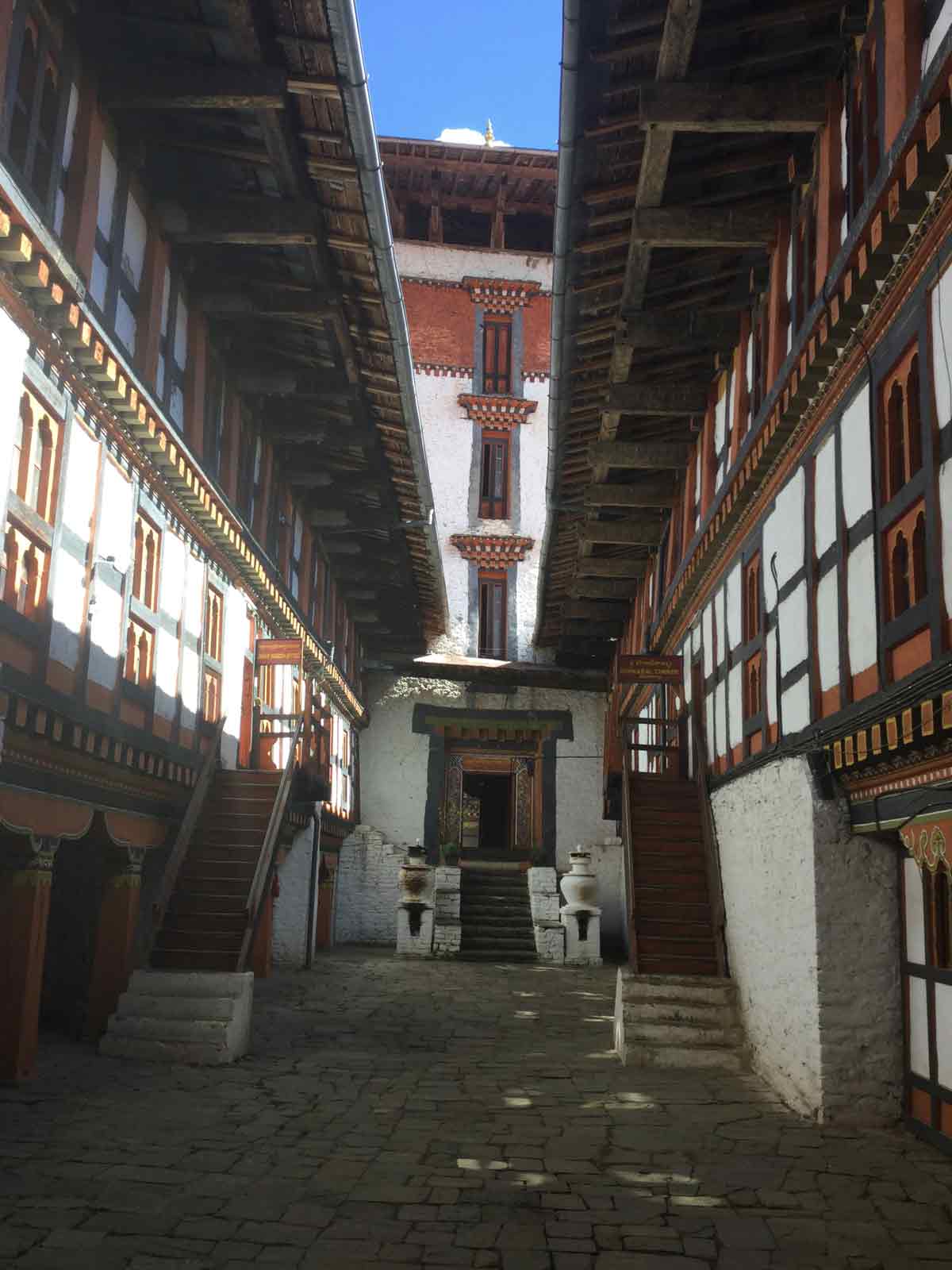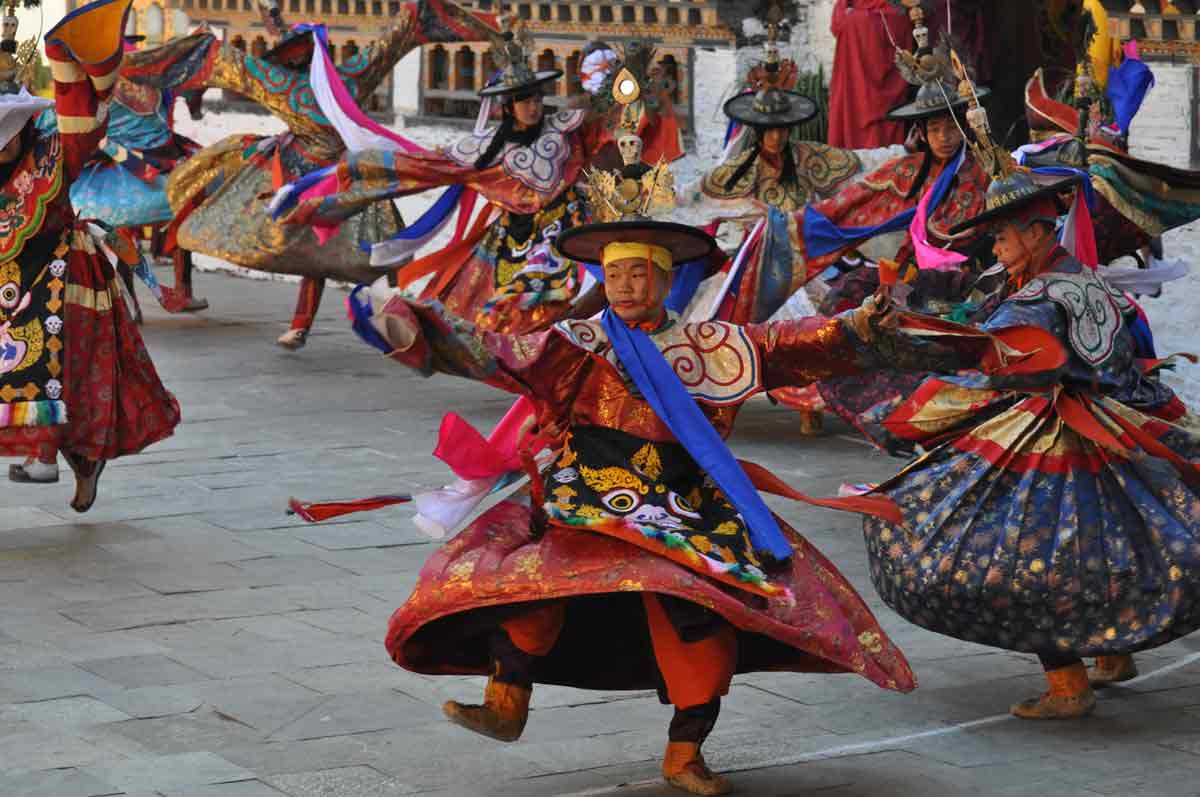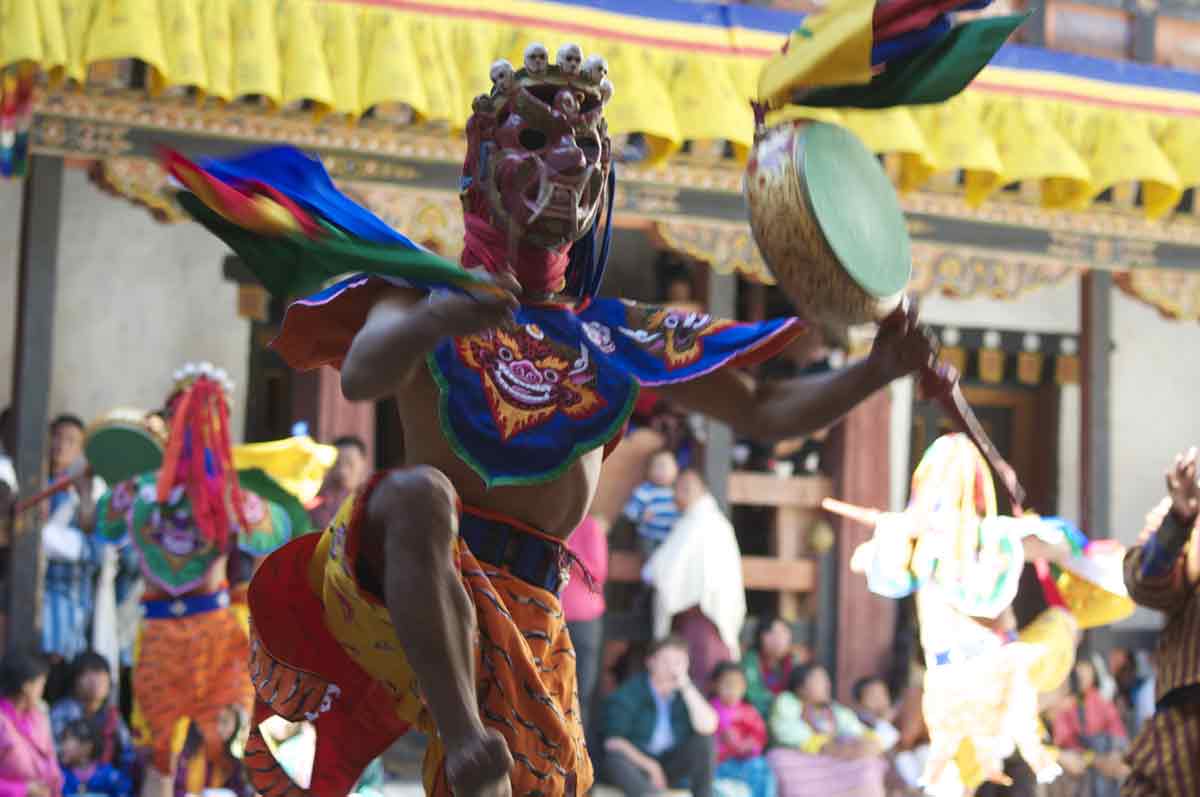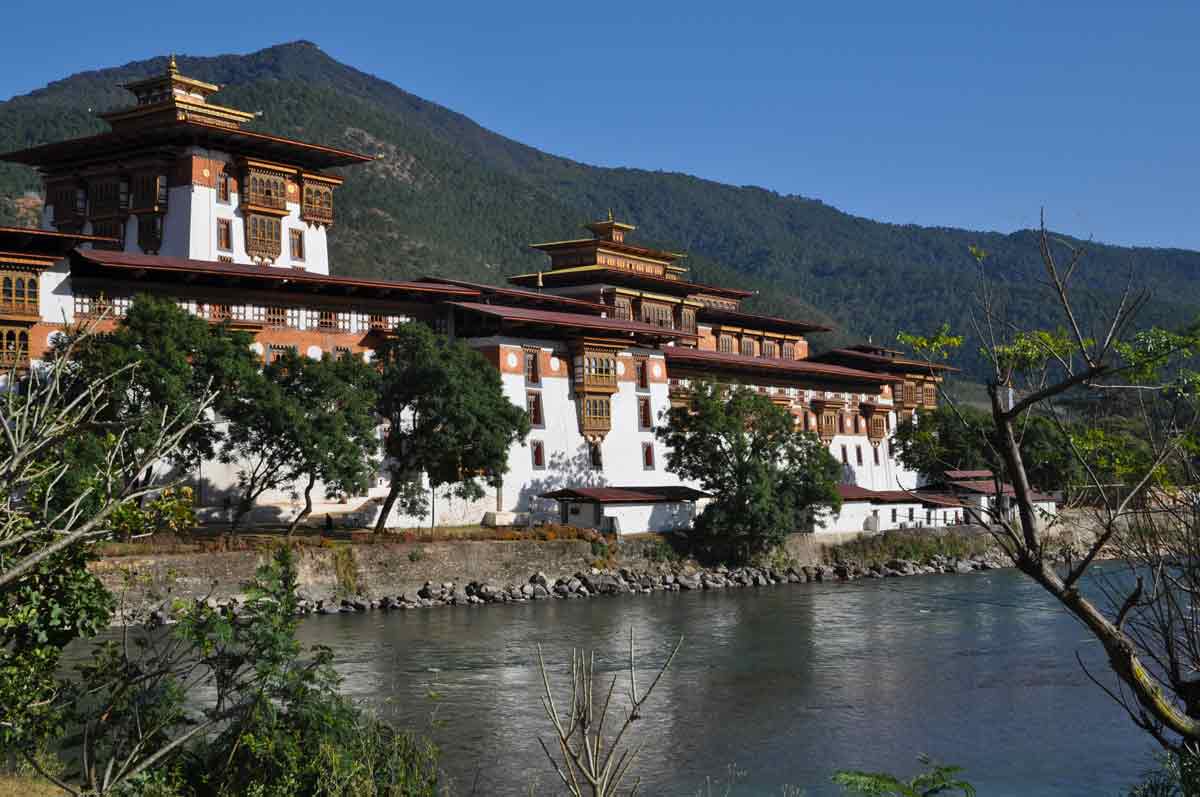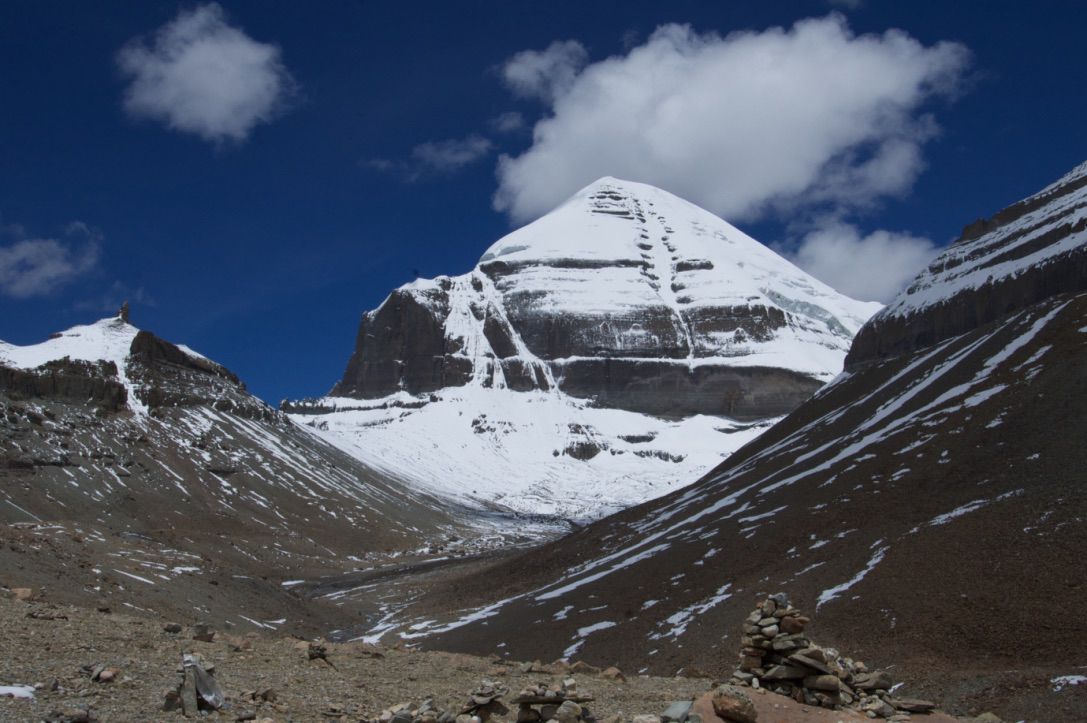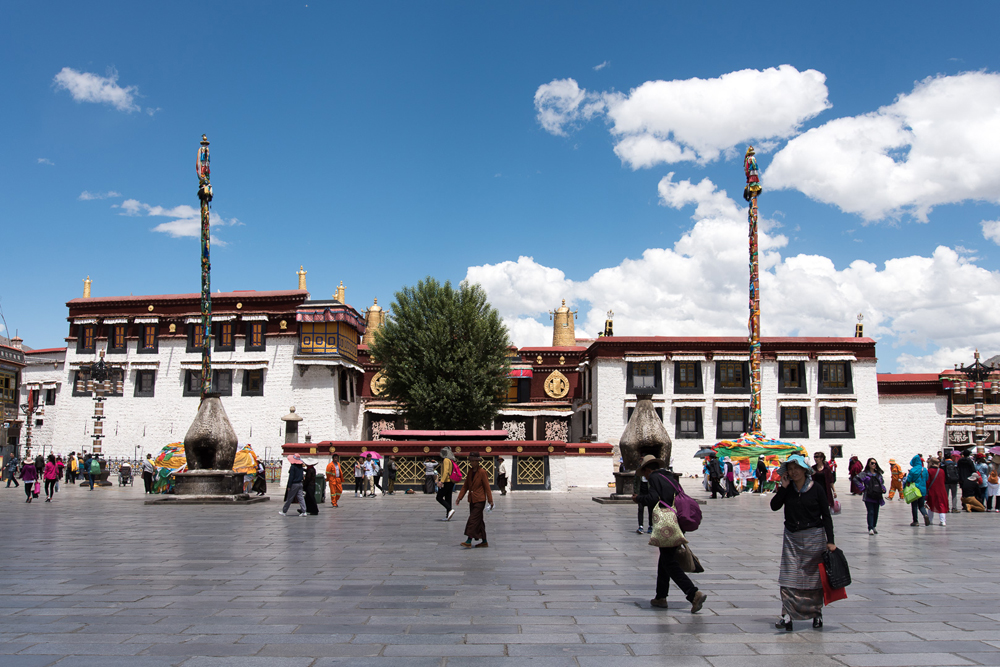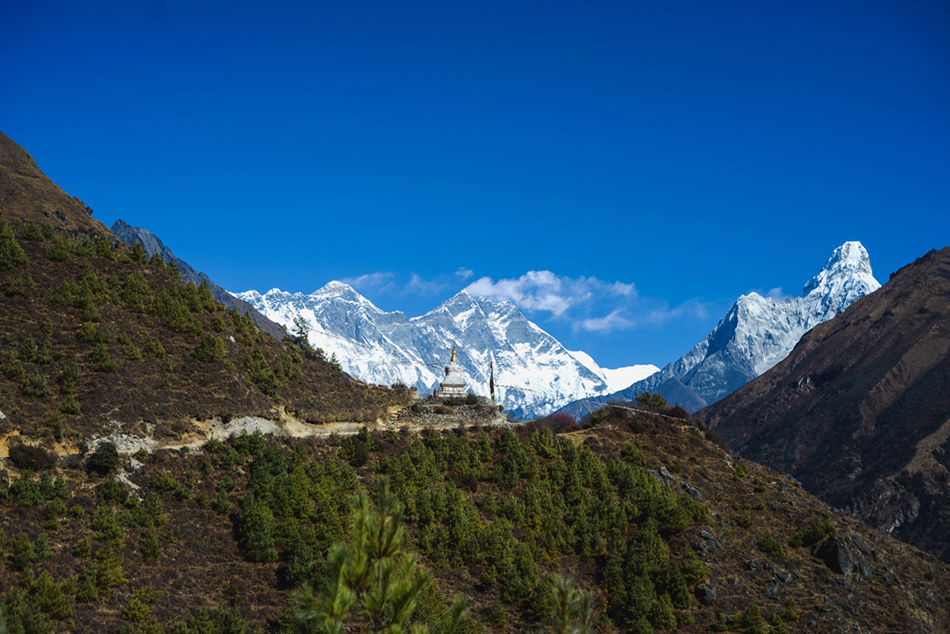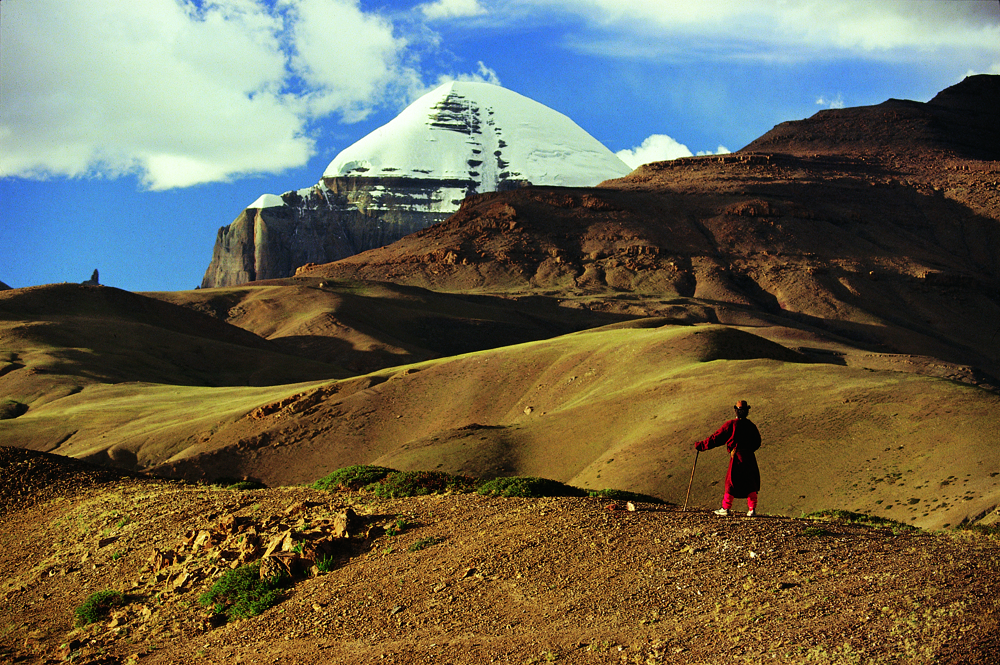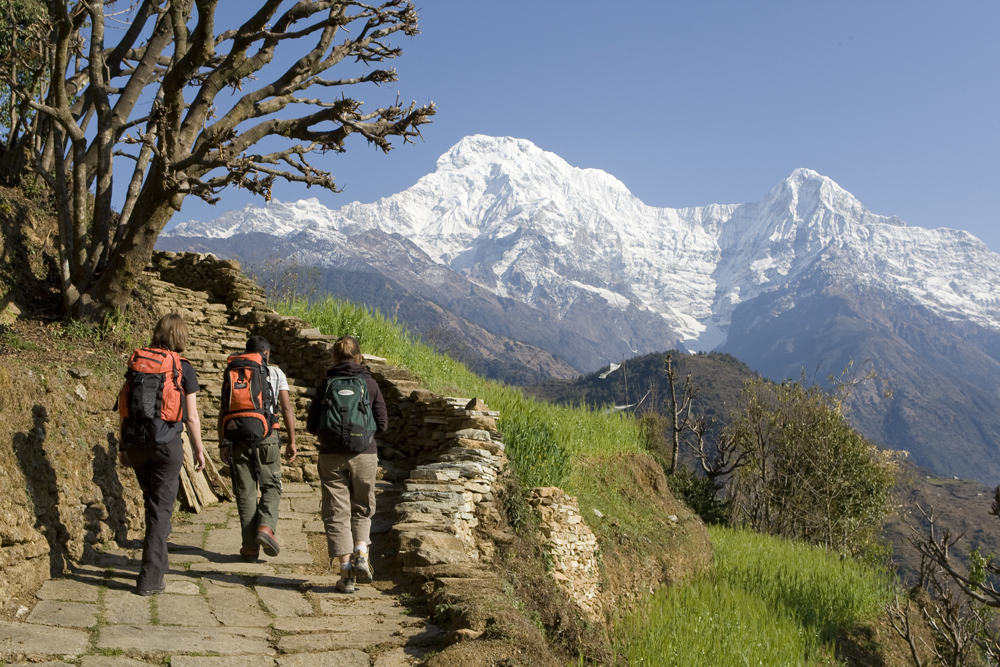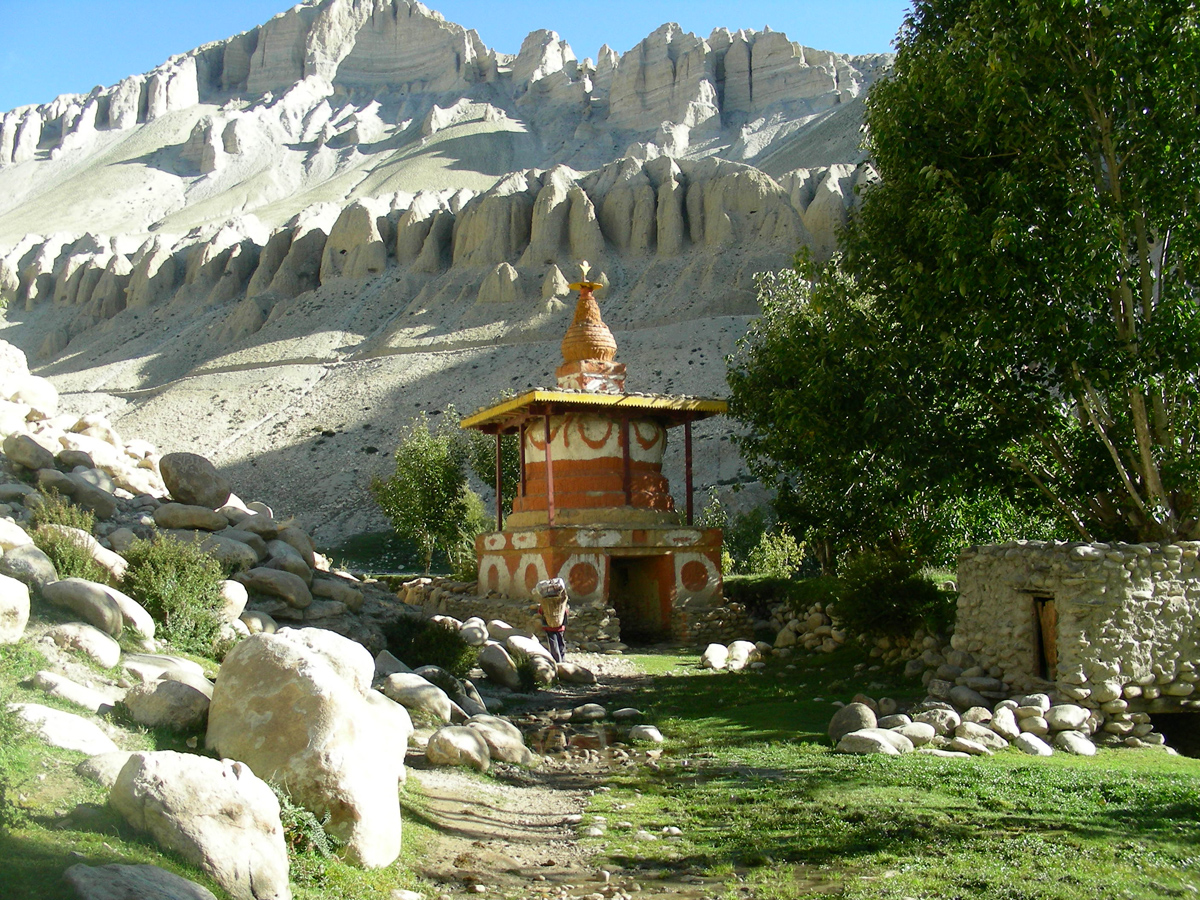FESTIVAL OF JAKAR
One of the most comprehensive and also culturally rich tours in Bhutan, it takes you through a host of important monasteries, some being the oldest in the country. Trips to inspect art collections, architectural specimens, places of learning where skills are taught and even a visit to a national park make up the rest of the journey.
Itinerary
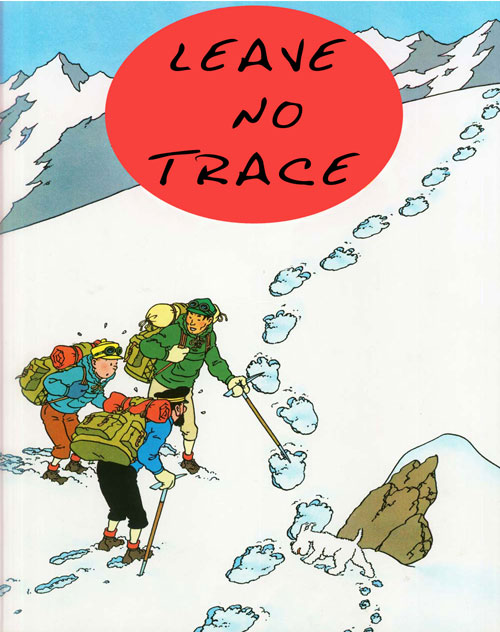
For your next trek with us in the Himalayas, travel light and aware: Base Camp offers you a biodegradable soap made in Nepal, to leave no trace ...
You are welcomed by a Bhutanese team at Guwahati, Assam, and transferred to Samdrup Jongkhar. The drive takes us through villages and tea plantations avoiding trucks and bicycles on the road.
- Duration of drive: 3hr
From Samdrup Jongkhar, we move on to Trashigang, the largest city in the east. After crossing the small Narphung La Pass (2,200 m), we reach the village of Narphung, famous for its wild tea. Its specialty however is butter tea. We continue our journey through a dense forest and go through some villages. We stop at Womrong for a cup of tea. Recently, half the village was burned down and the Bhutanese army rebuilt it the same year. We visit Kanglung Weaving School, created by a women's association that teaches village girls how to weave. From the Yangphu La Pass (2,800m), we descend to Trashigang through the village of Kanglung (university).
- Duration of drive: 3hr
- Accommodation: Hotel
This day is dedicated to visiting the surroundings of Trashigang. In the morning, we head for Radi, stopping on the way at Rangjung to visit the monastic school of Garab Rimpoche. We walk to the Tshangkhar village, which is famous for its wild silk fabrics. We spend the rest of the day visiting weavers at work in their own homes.
In the afternoon we return to Trashigang and visit the Trashigang Dzong.
Majestic and imposing, the dzongs are probably the most remarkable and important architectural structures of Bhutan. They fascinate people as much for their organization as for their beauty. For the Bhutanese, these architectural marvels evoke their history and are the guardians of law, peace, harmony, and legal authority. They are enclaves where social life and festivities take place. The Trashigang dzong dates back to the 17th century and houses 200 monks. Within the dzong, there is also the head office of the district administration. The evening time is free for exploring the surroundings.
- Accommodation: Hotel
The road leading to Mongar zigzags along the Gamri Chu River and after the village of Yedi, the road continues to climb through small villages and the forest to reach Kori La Pass (2,400 m). After arriving in Mongar, we visit the dzong of Mongardzong which was built recently. There are 150 monks and the district administration is also based here. In the evening, free time to walk around the city.
- Duration of drive: 3hr
- Accommodation: Hotel
The road to Bumthang is inspiring; we can photograph villages, villagers, landscapes, and waterfalls. We also encounter birds in this bird watcher’s paradise.
This trip takes us into the Thrumshing La National Park where one might see the elusive tiger. From the pass, the descent is remarkable with views of the mountains and deep valleys. We stop at the village of Ura which is famous for its festival. Most villagers here are monks and secular nuns while the post of the head lama is hereditary.
We then drive for two hours on a winding road through one of the most beautiful valleys of Bhutan to reach Jakar.
- Duration of drive: 6hr
- Accommodation: Hotel
It is a festival day in Jakar; the biggest festival in Bumthang. During the program, colorful dances are performed by monks while locals appear in their most beautiful outfits.
- Accommodation: Hotel
In the morning we attend the hoisting of a large painting, followed by a great ceremony with sacred dances in the dzong’s courtyard.
In the afternoon, we visit the following places: Jambay Lhakhang, built by King Songtsen Gambo of Tibet, is one of the oldest temples of Bhutan and dedicated to the future Buddha "Maitreya Buddha", also known as Jampa.
Kurjey Lhakhang (kurjey means ‘body print’). It was here that Guru Rinpoche appeared in the 8th century, and subsequently converted the king and the people of Bhutan to Buddhism. We can see the cave where he meditated and left his mark on the wall. Surrounded by 108 chortens, this place is one of the most revered in the country.
Tamshing Lhakhang. It was built in the 15th century by Pema Lingpa who was a major artist and architect, revered as a "great religious treasure" born in Bhutan. The paintings inside the temple are the oldest in the country. A metal chain is always seen inside. Pilgrims can go around the temple with this chain to cleanse their faults. Mebar Tsho, the burning lake, is recognized as a sacred place and it was here that Pema Lingpa discovered several treasures hidden by the Guru Rinpoche.
- Accommodation: Hotel
We drive to Trongsa, and cross the Yotong La Pass (3,425 m). Arriving at Trongsa, we visit the Trongsa Dzong which was formerly the summer residence of royal families. Built-in the 17th century, it is one of the country’s most strategically located dzongs. It is said that it took almost 150 years to build and houses 200 monks and officials representing ten different ministries of the district.
We then visit Ta Dzong, Trongsa ancient watchtower, which was converted into a museum in 2008. The museum’s prized possession is a collection of about 244 works of art. The famous crown of the first king of Bhutan is also on display here. Free time in the evening.
- Duration of drive: 3hr
- Accommodation : Hotel
We leave for Phobjikha and on the way in Chendijip, we see a large stupa modeled after Swoyambhu of Kathmandu in Nepal. We then stop at the village of Gangtey whose inhabitants are descendants of the 140 gomchens (secular monks). The largest school in Nyingmapa branch in western Bhutan dates back to 1613. We then walk downhill to reach the Phobjikha Valley.
- Duration of drive: 4hr
- Accommodation: Hotel
After we’ve gone past the last houses we reach the pastures and the view of the valley is marvelous. We then cross the Sheshi La Pass and while going down to Kilekhar we come across a beautiful forest, a paradise for birds.
-Accommodation: Hotel
In the morning, we drive to Thimphu and stop for lunch there. Later in the afternoon, we visit the Tashichho Dzong, home to Je Khempo, a religious leader of Bhutan. The rest of the day, we stroll around Thimphu.
- Accommodation: Hotel
After a 40-minute drive, we hike for an hour. It’s an easy hike in a beautiful location and we reach the Buddhist University of Tango. The temple here was built in the 17th century by Gyalsey Tenzin Rabgye, the fourth Desi (secular ruler). We meet with monks and learn a bit about Buddhism.
We then return to Thimphu for lunch. After lunch we head for the zoo to see the Takin, a strange animal said to have been created by the Lama Drukpa Kunley (known as the divine fool). It seems to have a goat's head and a cow's body. Our next visit is to a convent that has thirty nuns residing. We meet them to find out more about their life path. We then move on to a painting school. All religious paintings for temples, monasteries, private homes, and dzongs are made by the graduate students of this school. You have a chance to discuss with their teachers to learn about the symbolism found in these religious artworks and their origins.
We then drive to the heart of the city to see the Chorten Memorial, which was built in 1974 as a memorial of the third king of Bhutan. You are allowed to visit the interior of the stupa. Our last stop is at the Changangkha temple, which was built in the 13th century and is the most famous temple in Thimphu. We get the opportunity to see a remarkable statue of Avalokitesvara (Bodhisattva of compassion).
- Accommodation: Hotel
We drive to Paro and stop for a look around. We cross a 14th-century suspension bridge in metal chains and climb up for 20 minutes to reach the Tachogang temple. We then go back to Paro where we visit the National Museum. Originally a watchtower, this building was turned into a museum by the third king Jigme Dorji Wangchuck in 1969. There are rare collections of thangkas (religious scroll paintings) and statues here. This visit gives you an excellent insight into the Buddhism of Bhutan.
Our next stop is the 17th century Paro Dzong which was built by Shabdrung Ngawang Namgyal, the founder of Bhutan. 200 monks live here along with the district administration officer.
We then go down to the wooden bridge after which we enjoy some free time in town.
This shrine on a high cliff face symbolizes Bhutan and is a very important place of pilgrimage. It has also been a sanctuary for refugees for more than 1200 years. Taktsang or the ‘Tiger's Nest’ is 600 meters high on the steep cliff of the Paro Valley. It is a great photo opportunity. On the way back, we visit the Kyichu Lhakhang Monastery, one of the oldest in Bhutan.- Duration of hike: 4hr
- Accommodation: Hotel
*NB: On-site, option of renting mules for the climb.
End of our services.
What's included
- Accommodation in hotel
- English speaking guide
- Visa fees
- Visa for Bhutan
- Food (breakfast, lunch, and dinner)
- Entrance fees to the monuments
What's not included
- Visa for India or Nepal (depending on the country of transit)
- Repatriation insurance
- Tips, Personal expenses, and equipment, etc.
